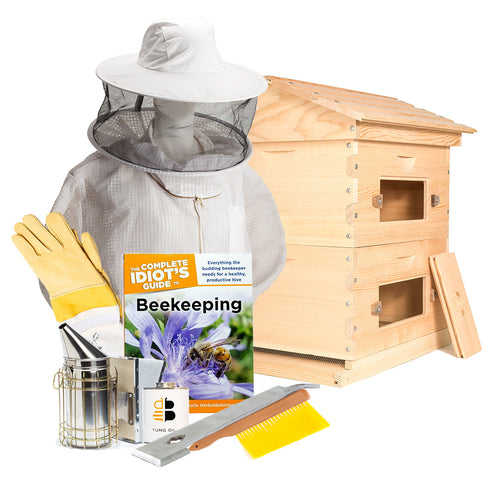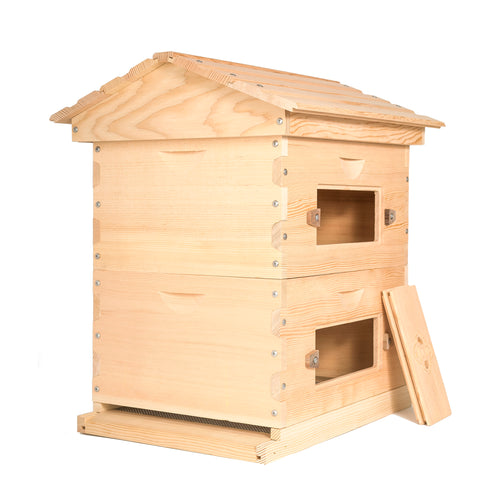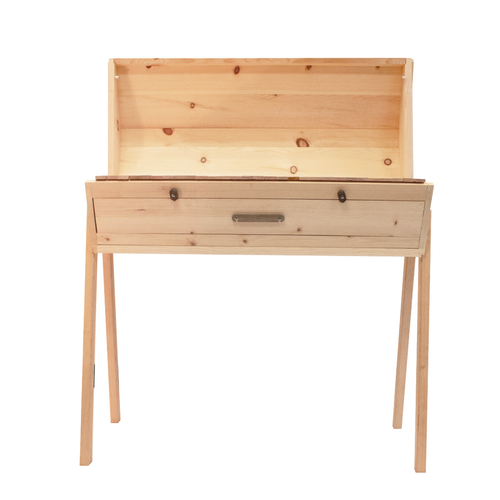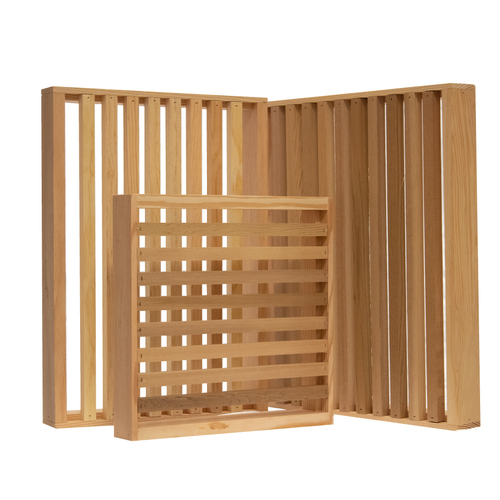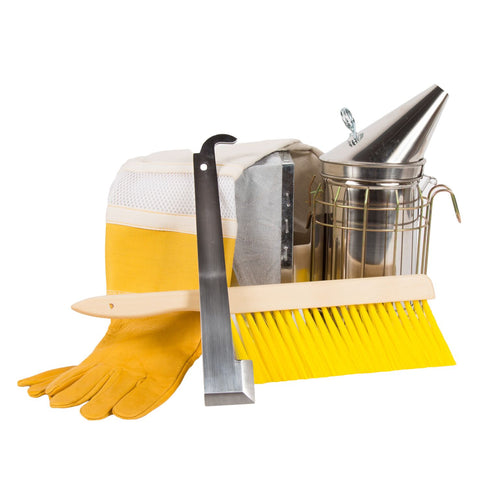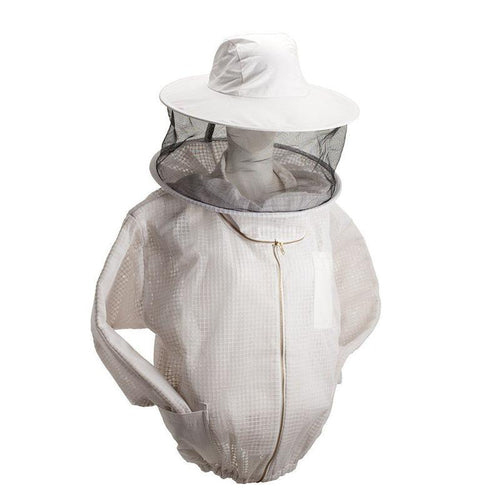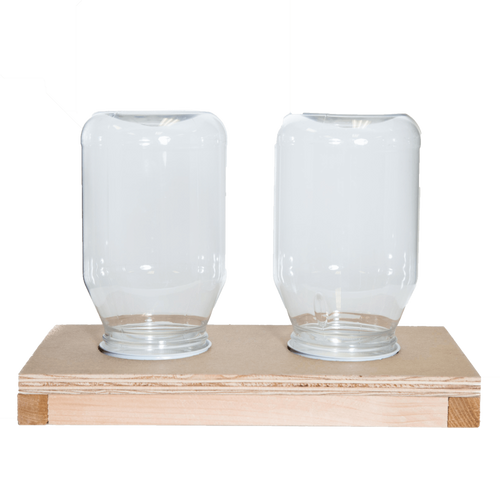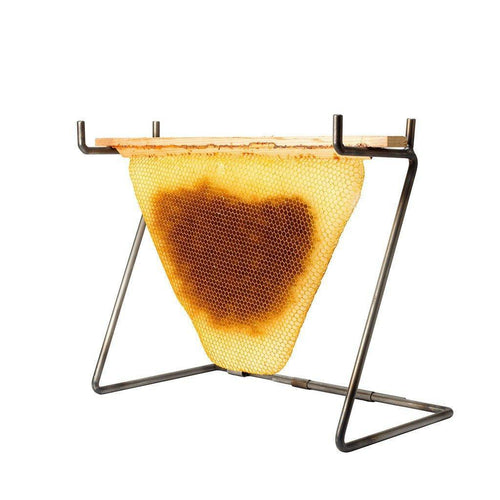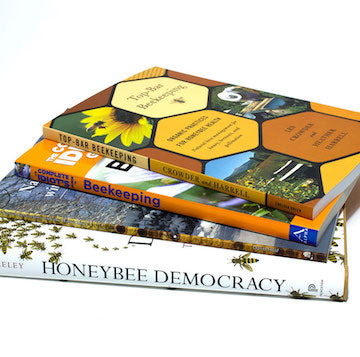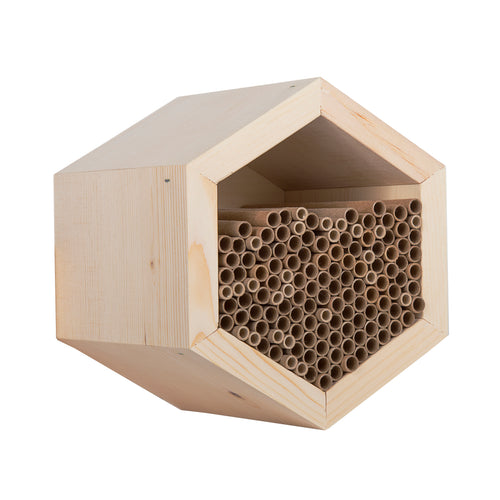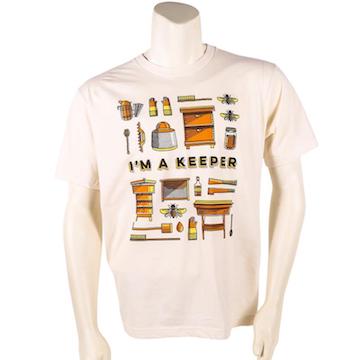BEE INSTALLATION
To install a bee package in a Langstroth hive, we recommend starting with either 2 deep boxes, or 3 medium boxes. With 2 deeps, include frames in the bottom box, and not in the top. With 3 mediums, include frames in the bottom 2 boxes, and not in the top. Remove the cap from the queen cage exposing the hard candy, and place the cage on top of the frames. Shake the bees into the empty top box, and place the package near the entrance for stragglers to move in on their own. Replace the frames in the top box, then set the inner cover and telescoping outer cover to close off top of the hive. Swarms can be installed with the same box configuration without needing to place the queen cage.
MAINTENAnCE HIVE CHECKS
Langstroth hives don't require an overwhelming amount of maintenance. The main tasks involved with hive maintenance include expanding the hive in the spring and removing boxes after honey harvest in the fall. Honeybees require a delicate balance of space. If the bees have too little space, they will likely swarm. If they have too much empty space in the hive, they will overwork themselves, and likely abscond. If the colony has filled out their comb in late spring, adding an additional box could prevent swarming.
When keeping bees in a Langstroth hive, you can choose to expand the hive for a growing colony in 2 ways: Supering (adding boxes to the top of the hive) or Nadiring (adding boxes to the bottom of the hive).
1) Supering
This is the method of expanding a hive by adding boxes to the top. These boxes are called supers. As the colony grows, the beekeeper adds supers for honey storage. The queen will keep her brood nest in the region of the hive closest to the entrance at the bottom of the hive. That way, when the colony moves toward their honey stores in the winter, they are further away from cold air coming through the entrance. Thus, by supering, you are giving the bees space to store honey. Brood boxes stay in place on the bottom of the hive, and are most commonly 2 deep boxes. Medium boxes are commonly used for honey supers.
2) Nadiring
Nadiring is the practice of expanding a Langstroth hive by adding empty boxes to the bottom. This is a more natural way for bees to expand, since in nature they build comb from the top down in their hive cavity. Nadiring is best done with all medium box configuration. When the bees are nearly out of space, add an empty box to the bottom. The bees will make fresh comb, and the queen will move down to lay eggs in the fresh wax near the hive entrance. Boxes with wax that once contained brood will move up, and the bees will use this comb to store honey. Full honey boxes are harvested off the top.


